Separation anxiety affects all of us at every age and stage:
There are many tried and true methods parents and teachers can use to help kids through separation anxiety. Some of these include: reading books about the topic, easing fears through discussion and validation, sending a child to school with a comfort item, and tucking a family photo into a backpack or lunch box.
In addition to those very valid ways to help children cope, there are many mindfulness practices that children can learn at home and then do whenever and wherever they feel separation anxiety.
For kids with separation anxiety, mindfulness is a way to keep their mind right where their body is…not back at home, not after school with mum or dad…but in the here and now, wherever that is. Mindful practices can help ease separation anxiety in kids.
When kids are anxious or worried, they’re going to have a constant conversation in their mind. It’s going to go something like this: “I’m not safe here. I need my mum. This is too hard for me. I can’t do this. I need to go home.”
Kids need a way to replace this negative self-talk with a mindful mantra or message that bolsters their self-confidence in new and anxiety-producing situations. The mantras don’t make mum or dad magically appear, but through their words kids strengthen their ability to cope in new places.
Sample affirmations for separation anxiety could be:
Grounding is a practice where you focus on sensations in the present moment. You might use your hand as a reminder to Take 5, noticing something you can experience with every sense: sight, sound, taste, smell and touch.
Touch is a very powerful way to ground and connect mindfully in the present moment. When combined with a mindfulness practice we call “Secret Symbols” it is an awesome way for kids to connect with loved ones they are missing.
In a quiet time with your child, choose a simple symbol that is meaningful to both of you. It might be a heart, a flower, a star or a happy face, etc. Talk about the symbol, why it is special to the two of you. For example, a heart, or two hearts could symbolize the love you share. A flower might have many petals to represent each family member, pets, etc.
Use a non-toxic body marker to write the symbol on yours and your child’s palm, wrist, etc. Secret symbols are nice because they are discreet, unlike a teddy bear that might not be the best idea to take to recess. Kids can use them on the school bus, on the playground, or at their desk in class. A secret symbol is like a temporary tattoo, which all kids love.
If you don’t want to use ink, or it isn’t permitted at your child’s school, you can have your child trace the symbol on their palm, like invisible ink. You might also write the symbol on an index card, small piece of paper, or on a blank sticker. There are many ways to access Secret Symbols, and you can choose the one that is best for your child.
Explain that this is your secret symbol, and the way you can connect with each other anytime and anywhere. Say, “Whenever you feel anxious, you can see or trace our secret symbol and know that we are always connected and never far apart.” They can trace the symbol with their finger while repeating affirmations or doing relaxation breaths.
Creative visualization involves creating a soothing image in your mind that you can instantly recall in a stressful situation. Help kids think of a place or scene that is soothing to them. Maybe the beach, cuddling with their pet, or on a rocket ship soaring through space. Help them visualize this scene. You might use photos or videos to help them at first.
Then have them practice imagining or pretending they are there: on the beach, petting their dog, or on a rocket ship. Have them describe what they see and how they feel. Explain that they can use this soothing “daydream” to help them when they are feeling separation anxiety or any type of unease.
Taking relaxing breaths eases all kinds of stress and is particularly helpful for kids with separation anxiety. Kids can do belly breathing or just take slow, gentle breaths, whenever they feel their bodies tensing and worries filling their minds. Breathing slowly while tracing their Secret Symbols is a gentle way to combine breath and touch.
Kids who can count might try 3 by 3 breathing which is simply inhaling for three seconds, holding the breath for three seconds and exhaling for three seconds. They can repeat to themselves: “Inhale: one, two, three. Hold: one, two, three. Exhale: One, two, three.” Kids might trace a triangle on their palm while doing this exercise, each line of the triangle becoming the inhale, the hold or the exhale.
Learn more ways to teach relaxation breaths to kids.
To help with kid’s separation anxiety, sign up for a Wee Meditate membership. Our meditation library has hours of calming content designed specifically to teach kids meditation in a way that is accessible and engaging.

